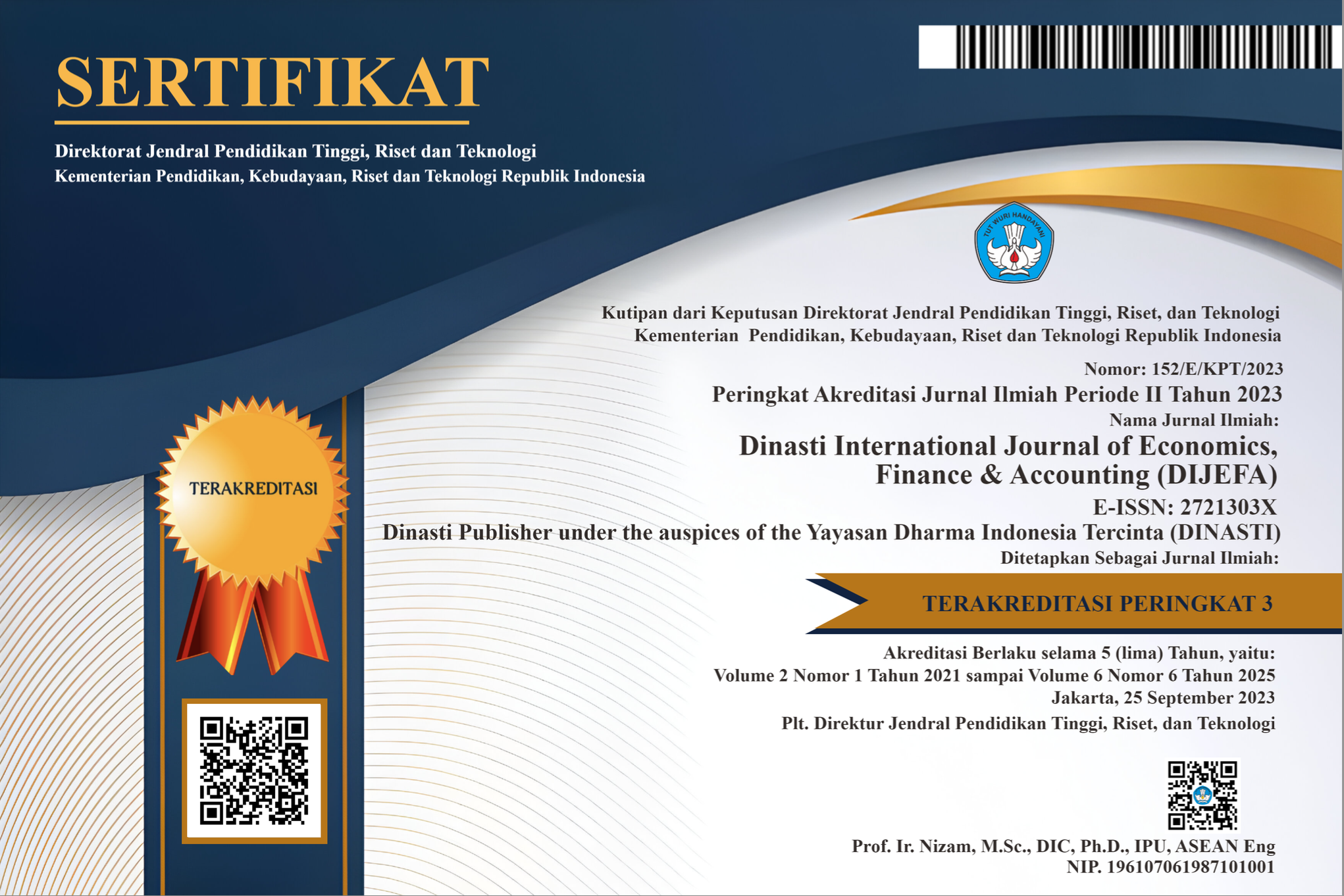Analysis of The Implementation of Green Banking in Islamic Banks (Empirical Study On Indonesian Sharia Bank KCP Kabanjahe)
DOI:
https://doi.org/10.38035/dijefa.v5i1.2505Keywords:
Implementation of Green Banking, Bank Syariah IndonesiaAbstract
The purpose of this research is to find out how Green Banking is applied to the policies and financing options offered by Bank Syariah Indonesia KCP Kabanjahe and has been utilized to execute the idea of Green Banking. The method used in this research is field research using a qualitative descriptive research approach. Data obtained from researchers' interviews with Bank Syariah Indonesia informants were analyzed in this research. Research findings show that Bank Syariah Indonesia KCP Kabanjahe has adopted a policy of implementing environmentally friendly banking which includes internal training on this matter, modification of the bank's IT infrastructure, and management style. Implementation of green banking in distribution at Bank Syariah Indonesia KCP Kabanjahe, financing is provided by reducing social and environmental hazards as well as evaluating customers' environmental documentation for financing applications. The Small and Medium Enterprises (UKM) market sector receives an environmentally friendly guarantee in the form of ownership of environmental documents from the Indonesian Sharia Bank Office KCP Kabanjahe.
References
Abdussamad, H. Z., & Sik, M. S. (2021). Qualitative research methods. CV. Syakir Media Press.
Awatara, I. G. P. D., & Hamdani, A. (2019). Implementation of Green Investment and Green Competitiveness Strategy towards Green Banking in Surakarta City. Journal of Precipitation: Media for Communication and Development of Environmental Engineering, 16(2), 53.
Desma Ria, et al. (2023). Implementation of Green Banking in the Environment of Bank Muamalat Indonesia. Global Journal of Islamic Bank and Finance. 5(1), 1-22.
Diah Anggraini, et al. (2020). Analysis of Green Banking Implementation and Financial Performance on Bank Profitability in Indonesia (2016-2019). Journal of Business, Management and Informatics. 1-21.
Kurniawan, L. L. (2021). The Effect of Financial Performance on Green Banking Disclosure with Control Mechanism as a Moderating Variable. Scientific Journal of Wahana Akuntansi, 16 (1), 1-16.
Mutmainna, N. (2021). Analysis of Green Banking Implementation at Bank Muamalat Indonesia (2017-2020 Period). (Doctoral dissertation, State Islamic Institute (IAIN Palopo)).
Nurdin, I., & Hartati, S. (2019). Social research methodology. Media Sahabat Cendekia.
Nurmalia, G. (2021). Green Banking and Capital Adequacy Ratio Affect the Profit Growth of Islamic Commercial Banks in Indonesia. Fiduciary: Journal of Finance and Banking, 4(2).
Salsabila, A., Fasa, M. I., Suharto, S., & Fachri, A. Trends in Green Banking as Productive Financing in Realizing Sustainable Development. Az-Zarqa': Journal of Islamic Business Law, 14(2), 151-174.
Zulfikar, R., Mayvita, P. A., & Purboyo, P. (2019). Adoption of the canvas model businessplan preparation technique for business planning of street culinary umkm in the gatot subroto area of banjarmasin. Jurnal Pengabdian Al-Ikhlas Kalimantan Islamic sUniversity Muhammad Arsyad Al Banjary, 4(2).
Downloads
Published
How to Cite
Issue
Section
License
Copyright (c) 2024 Cindy Anggreni, Ahmad Syakir, Tuti Anggraini

This work is licensed under a Creative Commons Attribution 4.0 International License.
Authors who publish their manuscripts in this journal agree to the following conditions:
- The copyright on each article belongs to the author(s).
- The author acknowledges that the Dinasti International Journal of Economics, Finance & Accounting (DIJEFA) has the right to be the first to publish with a Creative Commons Attribution 4.0 International license (Attribution 4.0 International (CC BY 4.0).
- Authors can submit articles separately, arrange for the non-exclusive distribution of manuscripts that have been published in this journal into other versions (e.g., sent to the author's institutional repository, publication into books, etc.), by acknowledging that the manuscript has been published for the first time in the Dinasti International Journal of Economics, Finance & Accounting (DIJEFA).


























































